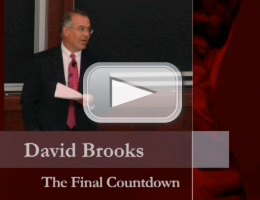Outtakes from John Boyer’s interview
On press coverage of Hyde Park
For the most part these are reasonably smart people who get an assignment and come out here. And like reasonably smart, professional reporters, they spend a day or two, talk to people, and they get a partial slice. Maybe they read a couple of the previous stories; I suspect there’s an interconnected genealogy to these stories.
But in the end, it’s like a land of shadows. You’re just chasing shadows, in a way. All of these reporters are going to write their own take. Some are better than others, and it’s interesting to see this place described. It’s like if somebody takes your picture and they jiggle the camera so it’s slightly out of focus. They get it somewhat right but not quite right.
On the University’s perceived otherness
My mother grew up in Woodlawn. She went to the school where our charter school is now, at 64th and University. Her father was a small businessman, and they lived down on 68th Street. She told me that her mother said she shouldn’t come over here. ‘That’s not a place for people like us’—lower-middle-class Irish types. The University was perceived to be very different. The irony is that a lot of lower-middle-class people came to this university, so it’s not that we were a bastion of elitism. In the interwar period we were much more socially, culturally, religiously, and ethnically diverse than the East Coast Ivies. But that perception was out there and probably still is.
On the ivory tower
The University’s early trustees didn’t set out to get the rich kids; they wanted students who would be able to do the work and would be committed to learning. Even into the ’20s and ’30s and ’40s, the children of trustees would go east to college. Not many came here. We really became a Chicago university. … So the student body belied almost from Day 1 that this was going to be an aristocratic school. And ultimately the kind of student you have shapes the University profoundly. Many of these students came from working class, lower-middle-class, middle-middle-class backgrounds. They lived at home and commuted here on the trolley or the streetcar. These were people who came out of the city and went back to the city. Their sense of the University was not that of a sacred cloister to be prized as something totally apart from the rest of the world.
On the University’s mission
Of all the private universities in United States or Britain, this one probably has the strongest sense of itself being defined by the faculty. This begins in the 1880s and 1890s. But you can’t just have a smart, hardworking faculty. You need smart, hardworking students who buy into the idea of meritocracy. This feeling of entitlement—I mean that in a good sense—creates a very ferocious sense of academic freedom. This was one of the strongest places in the 1930s and ’40s in defending itself against the Red Scare and McCarthyism. Robert Maynard Hutchins was spectacular, very heroic. While other university presidents were hiding under the table during the ’40s, Hutchins was willing to speak out. The faculty and students expected him to speak out. Added to this is a semireligious mission that the cause of the University—the truth it seeks, the learning it sponsors, the benefits for society that it wishes to enable—is almost providential. It has to happen. William Rainey Harper used to say that searching for truth is searching for God. And anybody can search for truth. So the University came to have a godly mission, even though from Day 1 it was a nonconfessional, and then very quickly a secular, university.
WRITE THE EDITOR
DISCUSS THIS ARTICLE
EMAIL THIS ARTICLE
SHARE THIS ARTICLE
MORE FROM THE MAGAZINE
RELATED LINKS
- Economists’ statement on John McCain’s economic plan
- “Mr. Obama’s Neighborhood,” Weekly Standard
- “Mister Maverick, Meet Da Machine,” Wall Street Journal
- “Con Law,” The New Republic
- “Obamanomics,” New York Times
WEB EXTRAS

